Rotary engines are among the most used engines in the vehicle industry, especially in the 1970s. It's true that they're not as spectacular as large blocks and LS engines, but for certain people, nothing beats the pleasure of driving one or the way it sounds. And after thorough research about rotary engines, we have determined whether or not they have spark plugs.
Yes, a rotary engine contains spark plugs. It actually includes two of them, and it is because of the engine's lengthy combustion chamber.
If you are that deeply curious about rotary engines, it would be best to keep reading to know them better. Doing so will help you learn about its parts, advantages, disadvantages, and how it works. Let's delve into the details!
What Are The Parts Of A Rotary Engine?
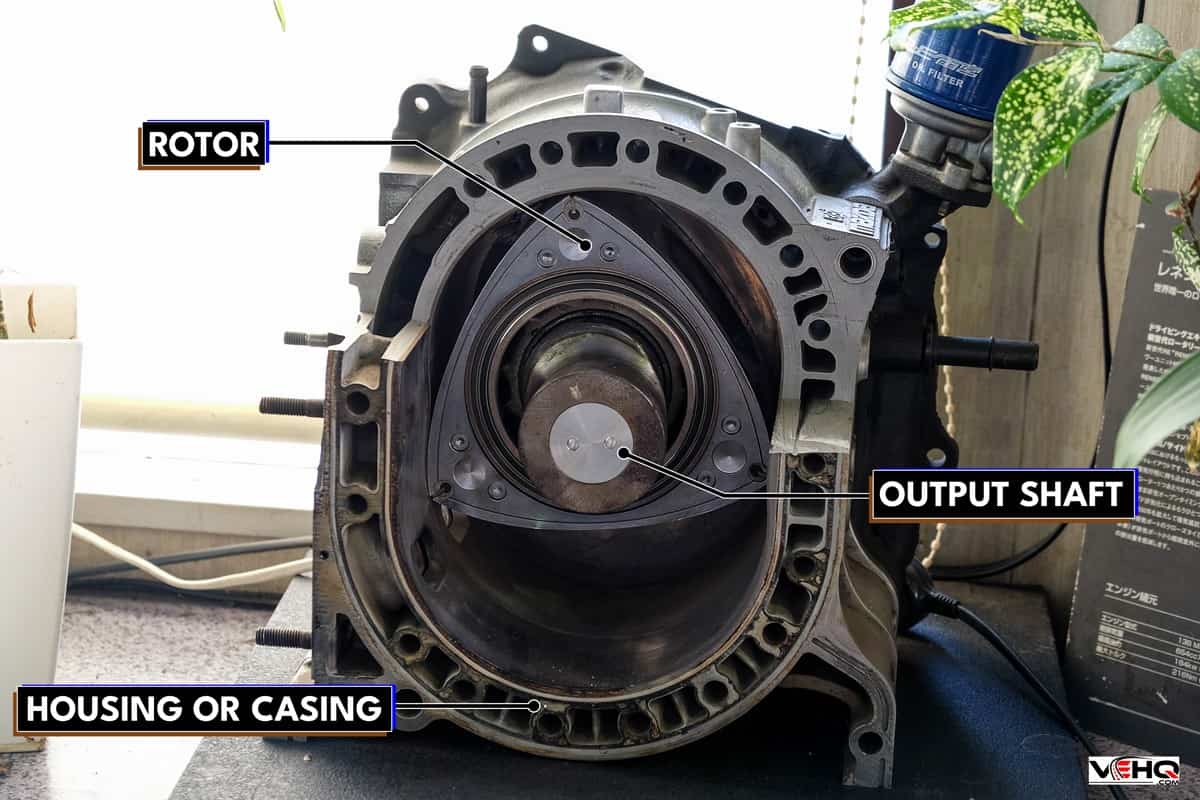
For you to quickly understand the entire post, it would be best to familiarize yourself with the different parts of a rotary engine. And they are the following:
Rotor
Know that in a rotary engine, the rotor acts like the piston in a traditional one. It is triangular in design, and each of its three convex sides contains a pocket that provides the necessary force and room for the air or fuel combination.
Housing Or Casing
Keep in mind that the casing is the next major component of the rotary engine after the rotor itself.
The oval shape is engineered such that the rotor blade tips remain in constant contact with the chamber walls. Moreover, know that housing is critical because it operates throughout the following phases:
- Intake or Input Phase
- Compression Phase
- Ignition or Combustion Phase
- Exhaust Phase
You can see the exhaust and intake ports in the casing. However, know that this component contains no valves. The pipe connecting to the exhaust does so directly, whereas the input port links to the throttle.
Output Shaft
The output shaft has spherical lobes positioned slightly asymmetrically, or "offset," from the shaft's core. Rotor blades are in a position that slides over the lobes, which function similarly to the crankshaft of a traditional engine.
How Does A Rotary Engine Work?
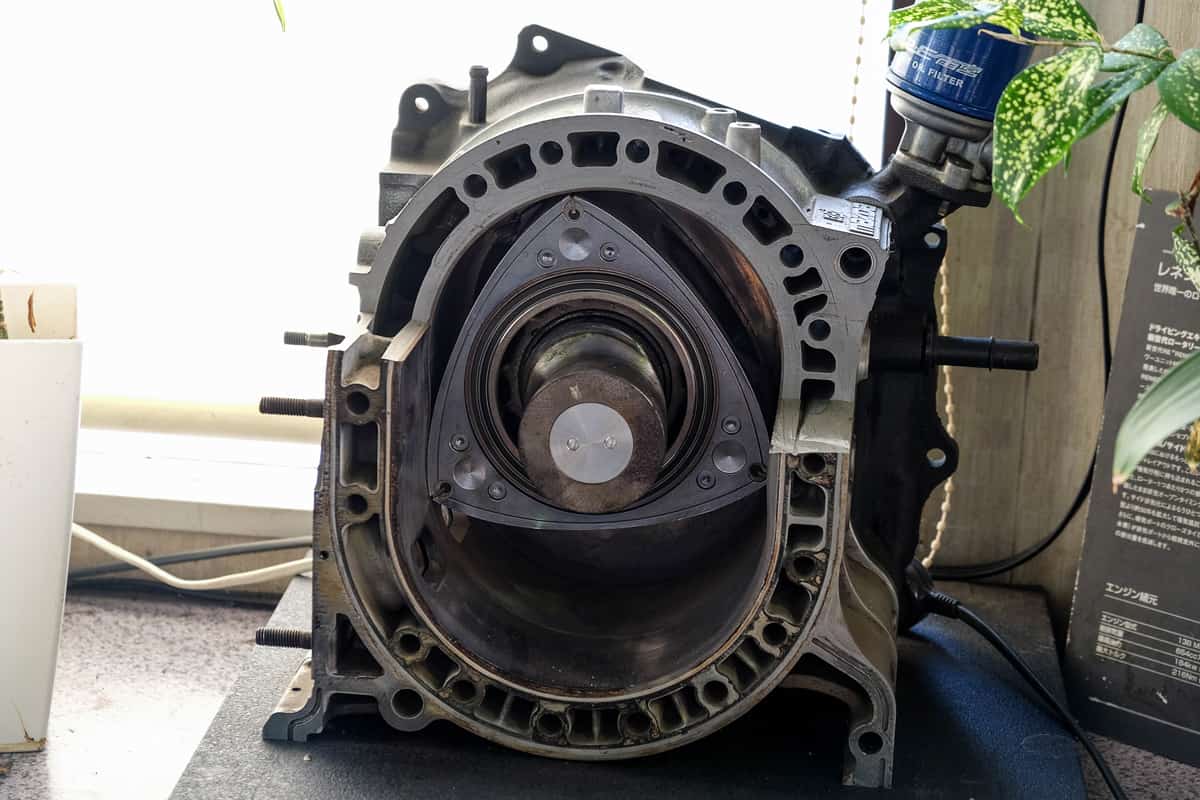
Rotary engines are one innovative and interesting creation. And since you have now familiarized yourself with the parts of a rotary engine, you should also learn its process.
Rotary engines use the exact fundamentals of combustion but do it in a very new context. However, most of the standard components in a regular engine are absent from the barrel-shaped motor.
You might be familiar that the four-stroke piston is the central component of traditional or piston engines, providing the necessary energy to drive the vehicle. The four-stroke combustion cycle is popular in rotary engines in a similar manner, achieving the exact results in a unique way.
As already discussed in an engine, you can consider the rotor as the core on a spherical lobe that sits on the output shaft.
Because of the lobe's peculiar placement on the shaft, the rotor is able to turn the output shaft. In addition, when one round of the rotor is complete inside the casing, it will cause the lobe to move in circles three times. As the rotor spins within the casing, the chambers it creates expand and contract, producing a pump-like effect.
And now, let's break down the four processes of how a rotary engine gets its power so you can fully grasp it.
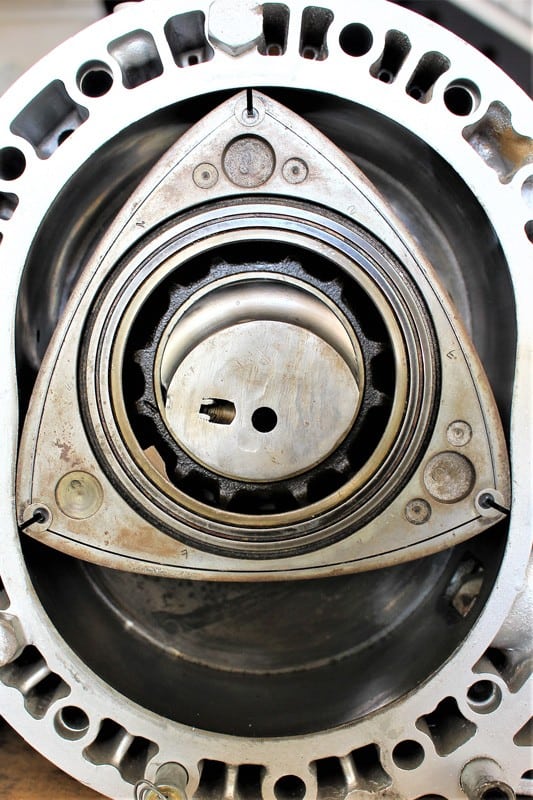
1. The Intake Procedure
You'll know that the rotary engine's intake stage will begin if the rotor tip makes contact with the inlet port. The result is an open intake port within the chamber. Right now, you must keep in mind that the chamber's capacity is at its lowest point.
Moreover, as the rotor moves through the inlet pipe, expect the chamber to suck in the fuel and air. As the rotor's highest point moves past, the chamber evacuates, and pressure or compression begins.
2. The Compression Stage
When the rotor continues to rotate clockwise all over the casing, it causes the space within the chamber to contract once more. Because of this, the air and fuel combination compresses. After the rotor's surface has completely circled the spark plugs, the chamber's capacity has again decreased to an absolute minimum. When this happens, combustion begins.
3. The Combustion Phase
Typically, you can see two spark plugs in a rotary engine. And as we have mentioned earlier in this post, the main reason why there are two spark plugs in a rotary engine is because of its lengthy combustion chamber. That chamber necessitates them to distribute the flame as the vehicle operates evenly.
The chamber expands as the rotor spins faster. Additionally, as the rotor approaches the exhaust vents of the vehicle, the increasing combustion gases continue to drive it, generating energy.
4. The Exhaust Stage
More significant combustion gases can escape through the exhaust after the rotor's apex has passed out the port. Due to the rotor's forward momentum, the chamber compresses, and the resulting expansion forces the residual exhaust out of the port.
As the chamber's pressure drops toward its lowest limit, the rotor travels back through the intake port, and the cycle repeats. Moreover, keep in mind that there are three combustion strokes per revolution because the rotor is constantly operating in the same region of the phase.
For a better understanding of how a rotary engine works, you can watch the video below:
What Are The Advantages Of Rotary Engines?
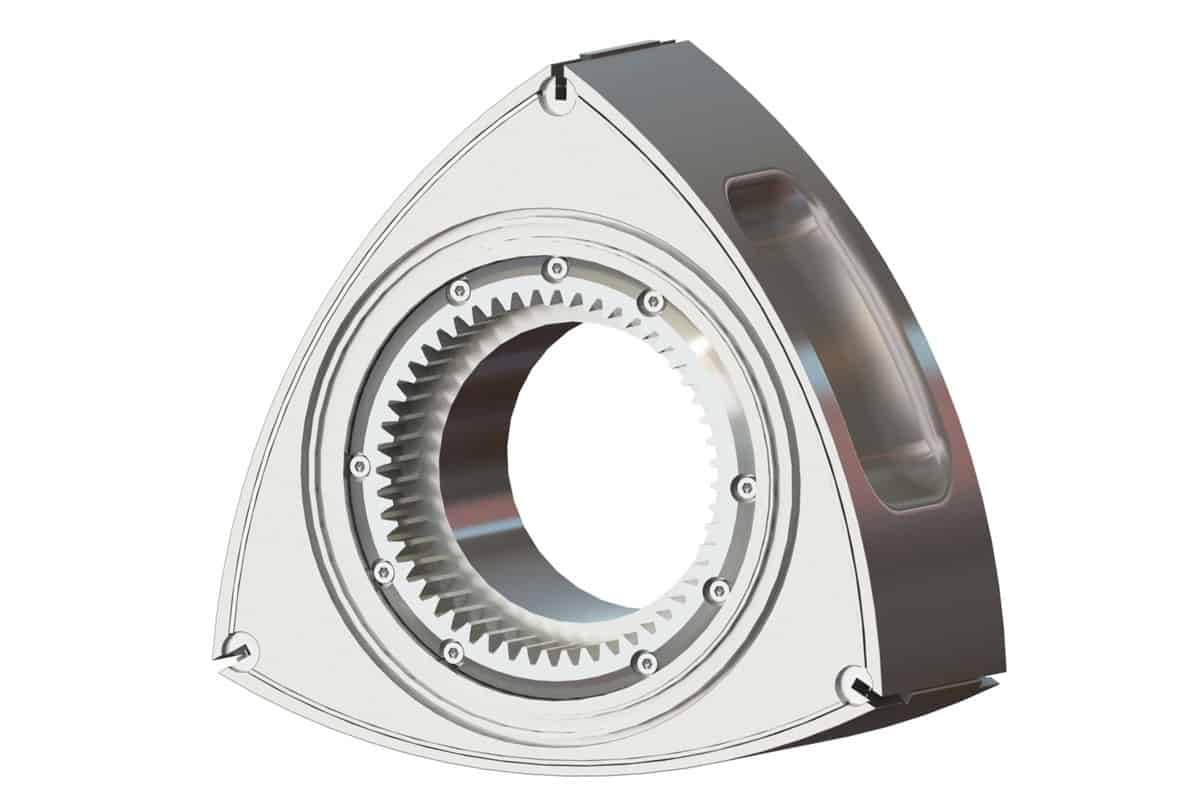
Because of the benefits rotary engines can provide, many people use them. And to know these advantages, you can check the details below:
Fast-Paced And High-Powered
One crucial thing about a rotary engine is that it has no revolving weight, as there would be with a conventional engine's pistons or valves. It results in an exceptionally well-balanced engine with a seamless grid supply and high-rpm capability free from issues like valve float.
Less Number Of Possible Failure Points
In this case, simplicity is often a hallmark of success. The rotary engine has only three primary components, which rotate in a two-rotor motor, significantly reducing the number of parts needed for combustion.
Often in engineering, the simplest solution tends to be one of the best solutions. The rotary engine drastically reduces the number of parts required for combustion to occur, with just three main components spinning in a two-rotor motor.
Commendable Size
Its compact design is one of the most crucial or major pluses. One example is the Mazda RX-7's 13B engine, which is about one cubic foot, yet it made a lot of power considering its diminutive size.
What Are The Disadvantages Of Rotary Engines?
Like any other thing, drawbacks on a rotary engine are inevitable. And if you want to know those things, you can check the details below:
It Burns Oil
A rotary engine consumes or burns oil. Know that the combustion chamber straightly squirts oil using pumps in addition to oil spray nozzles that you can locate inside the inlet manifold of the vehicle.
Not only does this imply that the user must monitor the oil levels regularly to ensure that the rotor remains adequately oiled, but it also indicates that more harmful substances go out via the exhaust. And you surely are aware that the ecosystem despises toxic substances.
Emission Or Pollution Can Kill Off The Rotary
When the emissions factor in, keep in mind that there is a huge possibility that they will doom the rotary to failure. Because of the inefficient combustion, natural tendency to consume and burn oil, and sealing difficulty, this engine cannot compete with others in terms of pollutants or fuel efficiency.
Sealing Of The Rotor
An additional problem that can have an effect on emissions is that it is difficult to cover the rotor when temperatures vary significantly from place to place surrounding it.
Keep in mind that the intake and combustion processes happen simultaneously but in very distinct places within the casing. It indicates that the underneath part of the casing is significantly hot, and the top area is noticeably more relaxed or cooler.
When it comes to sealing, this presents a challenge since you are attempting to produce a metal-to-metal bond using metals functioning at temperatures that are distinguishable from one another.
You can mitigate such an issue to some degree, but you won't be able to eliminate it if you use coolant jackets to help distribute the thermal load.
Poor Heat Transfer
As mentioned earlier, the combustion chamber of a rotary engine is pretty long, which makes it a reason why the heat transfer is poor, unlike in a piston-cylinder design. In addition, it frequently caused unburned fuel to escape into the exhaust.
Is It Possible That A Rotary Engine Will Explode?
When functioning correctly, a rotary engine is capable of producing enticingly high levels of power, responsiveness, and noise. On the other hand, a rotary engine can cause a terrifying explosion when it fails.
What We Have Learned
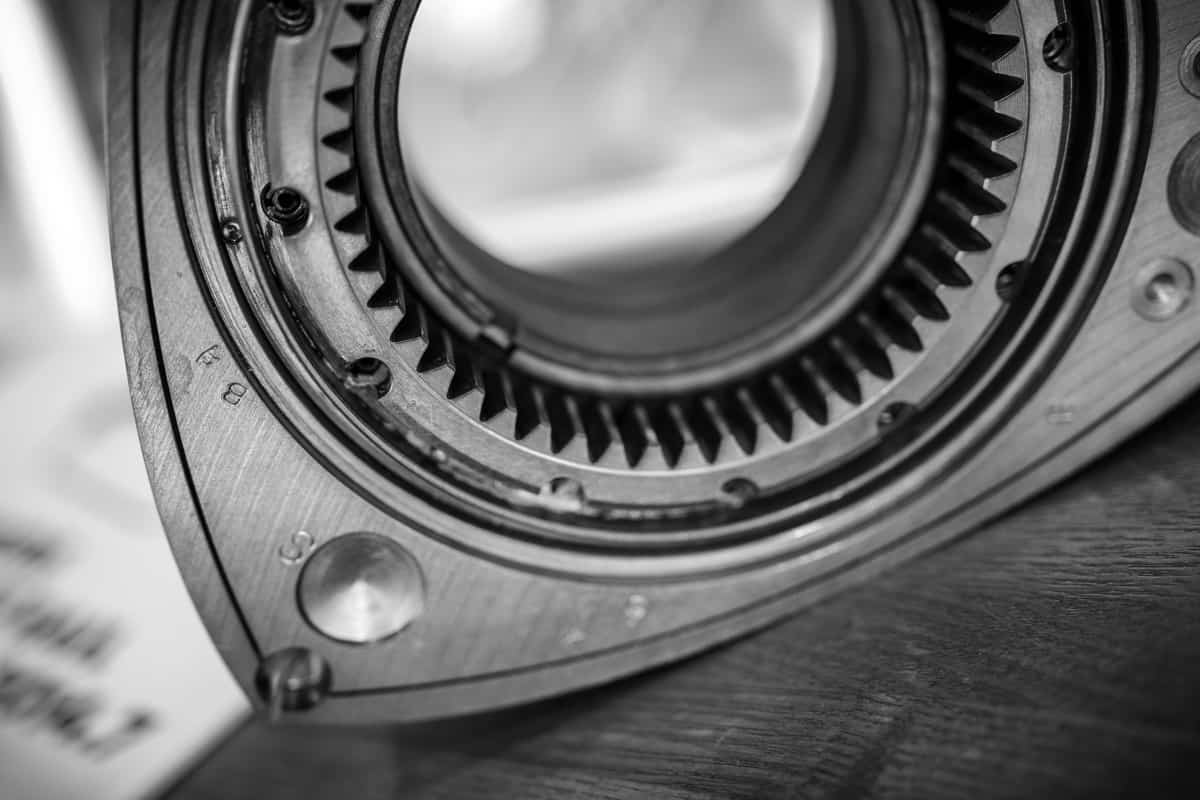
Now, you are finally aware that rotary engines contain two spark plugs. In addition, understanding a rotary engine's parts and how it works is crucial, especially if you plan to use a vehicle with one. Lastly, learning its advantages and disadvantages will help you determine whether or not a rotary engine is OK to utilize.
You have finally made it to the end! We hope you find this post helpful. Please reach out in the comments if you still have additional concerns. We'd love to hear from you! And for further reading, you can check these engine-related posts out!
Is It Safe To Drive With Reduced Engine Power? [Here’s What You Need To Know!]
